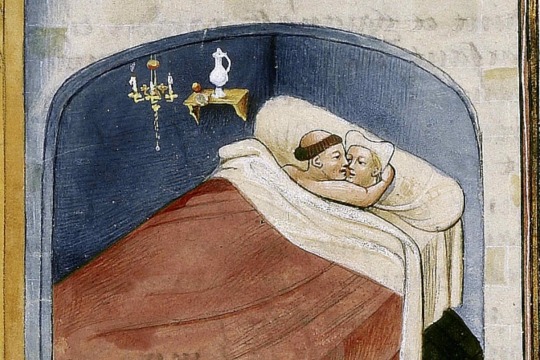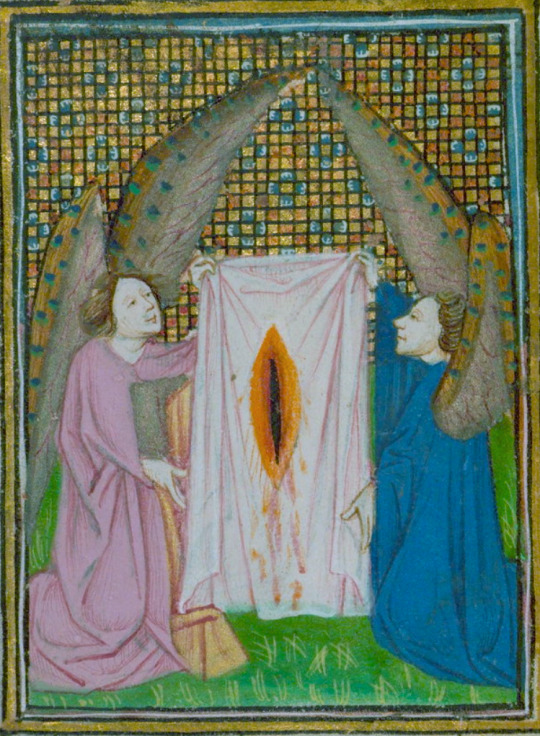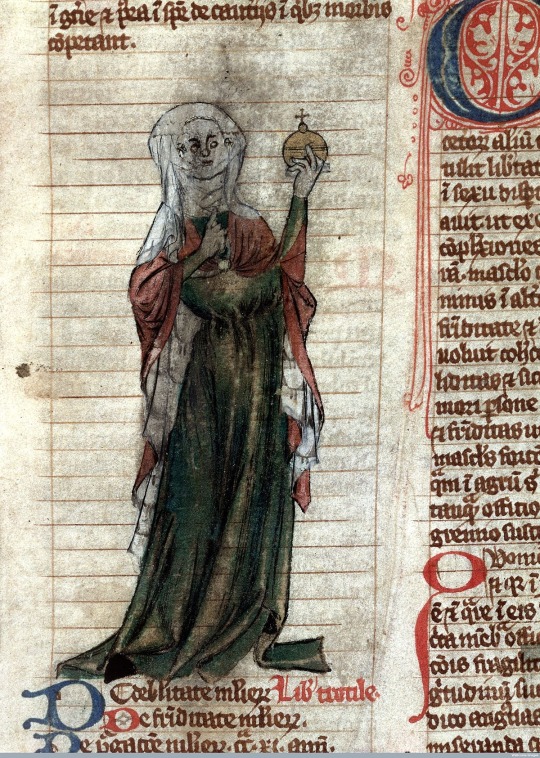#and there will be so many medieval women be prepared 😂
Text
Virginity & Marriage in Medieval Times — The “Virginity Test” and How Women “Cheated” Such Tests.

Berthold Furtmeyr, The Tree of Death and Life, Munich, Germany, 1489
Throughout the ages, a woman’s virginity was a highly prized attribute and a symbol of purity. Women were expected to be free from the stain of the sin of sex before marriage. It was impossible for a woman to lose her virginity before marriage and be considered “holy” but unsurprisingly, this standard did not exist for men. Medieval Christianity told women that, as the daughters of Eve, they are responsible for the fall of mankind due to their innate sin and this heavily influenced ideas of women’s sexuality–including the importance of virginity before the holy sacrament of marriage.
As we know, you were expected to be a virgin when getting married for the first time, and to prove that the woman was indeed a virgin, they inspected the bedsheets for blood after the consummating of the marriage. (I would of been shamed/exiled/killed/whatever punishment they laid upon me back then as I did not bleed my first time 😂)

Miniature from Le livre appelle Decameron by Giovanni Boccaccio, 1460s
What we know about the female body and modern medicine now, is that you don’t always bleed during your first time—that the hymen doesn’t always stretch/tear from your first time having sex. It can happen earlier on in life from various things, you could be born without a hymen or you could have a hymen that just doesn’t bleed, as the hymen doesn’t necessarily “tear”, it usually stretches because the hymen is a thin wall of membrane that extends across the vaginal opening but it usually has an opening (a “hole”) already in it that then stretches during sex (if it didn’t already earlier on in life) UNLESS you have an imperforate hymen which will tear and then stretch as it doesn’t have a hole in it at all.
It’s actually more common for women NOT to bleed than it is to bleed during their first time, or to bleed so little that it’s not very noticeable. The fact that a lot of women’s reputations and very lives depended on if they bled or not which was wholly out of their control, is just INSANE to me, but it’s very interesting how women dealt with this and prepared for if they didn’t bleed.

Book of Hours (Cistercian), ca. 1440, Walters Manuscript W.218, fol. 28v
Women often deployed methods to make themselves bleed or fake the fact that they bled, on their wedding nights. In the Trotula (an assembly of texts on women’s medicine written in the 12th century that was widely circulated and depended upon by women up until the 16th century), such methods are listed. A “How to Cheat a Virginity Test” guide, if you will. Some suggestions being:
* Arranging the Wedding when the Bride is on her period.
* Substituting the bride with another woman when it came to consummate the marriage. (Lol—the fact that this would work a lot of times… men 🙄 😂)
*Have a vial of Goat’s blood hidden under the pillow or somewhere and dash it on the sheets when the groom is not looking.
*A mixture of Herbs to bring on a period.
* Lastly, one of the more interesting and unusual methods was to put a leech on the labia (yes, you read that correctly) a few days before hand so that it creates a wound that will then turn into a scab and then during the rigorous motion of having sexual relations, the scab falls off and bleeds. 😳

Early 14th century (France), a copy of the intermediate Trotula ensemble, p. 65 (detail): pen and wash drawing meant to depict "Trotula"
Many Women were aware that “popping your cherry” during your first time didn’t always happen, or they weren’t virgins as their religion and society so unrelentingly demanded, and the fact that the method of confirming virginity with the sight of blood upon the sheets was relied upon (the “virginity test”) for years and years just goes to show how little women’s knowledge and experience were valued back then—even when it came to their own bodies! So, women did what they always have done: take matters into their own hands.
#me#mine#my post#history#medieval#middle ages#art history#women in history#virginity#marriage#virginity and marriage in the middle ages#trotula#manuscript#illuminated manuscript#the book of hours#other
17 notes
·
View notes